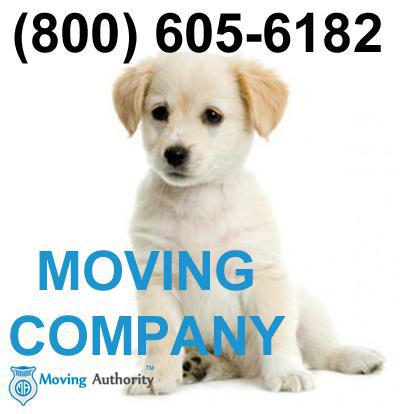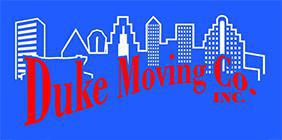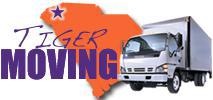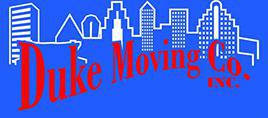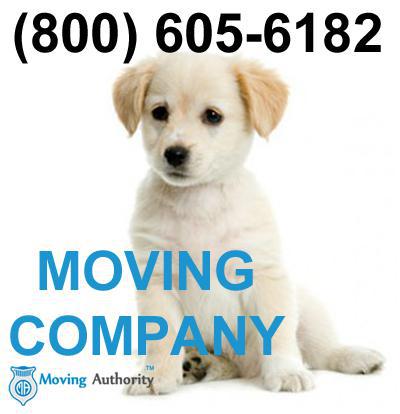LAST REVIEW
<QuerySet [<Review: Larry E., They moved arou>, <Review: Sara, Daniel Tyree an>, <Review: Chris Nelson, Mike, Charles a>, <Review: Michael Haley, We had a three >, <Review: Cynthia, Truly a "Miracl>, <Review: NANCY PHILLIPS, Eric and Anthon>, <Review: Chelsea Surgan, If you are maki>, <Review: Carol Ellington, Wonderful Servi>, <Review: Jesse Thompson, I just arranged>, <Review: Tom Fiorentino, Hired them for >]>
5
1
4
Reviewed <QuerySet [<Review: Larry E., They moved arou>, <Review: Sara, Daniel Tyree an>, <Review: Chris Nelson, Mike, Charles a>, <Review: Michael Haley, We had a three >, <Review: Cynthia, Truly a "Miracl>, <Review: NANCY PHILLIPS, Eric and Anthon>, <Review: Chelsea Surgan, If you are maki>, <Review: Carol Ellington, Wonderful Servi>, <Review: Jesse Thompson, I just arranged>, <Review: Tom Fiorentino, Hired them for >]> times,
customer satisfaction.
United States
South Carolina
Longs
Hired them for a move from Kure Beach to Florida with them storing our furniture until we found a house to buy.
Estimate was $5400 to their storage then $650.00 per month to climate control storage and $5700 to repack truck and deliver when we found a new home. Estimator made a "Mistake" and initial move to storage was$2200.00 higher than estimate which meant storage was $1050.00 instead of lower estimated amount of $650.00 and delivery to Florida was $7400.00 instead of quoted $5700.00
Employees were top shelf but a Mistake in estimating weight of our things cost us $5000.00 more than estimate. Owner returned phone call after five attempts contacting him. Salesman Brooks told me he couldn't sleep when he found out how badly he screwed up our estimate. Ultimately owner took 10% off the bill for extra weight his sales rep had screwed up. What can you do when they low ball price then tell you its just an estimate not binding but now they have all of your things and their held ransom. So sick and tired of moving company scams. No regulation or anyplace to take your issues to for resolution. I really thought trying to hire locally would be a good thing and reviews were all five stars Humm!!!! Wonder if their all honest reviews or their stacking the deck having friends play customers for reviews. There's no five star review from me.
LAST REVIEW
<QuerySet [<Review: Haley Wright, Incredible expe>, <Review: Renee W., I required an e>, <Review: Awesome Guy, Worst guy to ge>, <Review: Shelbie Lewis, Perry and his c>, <Review: Crystal Brown-Sturgis, I highly regret>, <Review: Dan Spires, Wonderful compa>, <Review: Tammy, Would not recom>]>
5
1
3
Reviewed <QuerySet [<Review: Haley Wright, Incredible expe>, <Review: Renee W., I required an e>, <Review: Awesome Guy, Worst guy to ge>, <Review: Shelbie Lewis, Perry and his c>, <Review: Crystal Brown-Sturgis, I highly regret>, <Review: Dan Spires, Wonderful compa>, <Review: Tammy, Would not recom>]> times,
customer satisfaction.
United States
South Carolina
Piedmont
Would not recommend. This company had 2 guys come out to move my elderly mother and they charged her $600.00 to move 2 beds, table, 2 couches , washer, dryer and china hutch that they ended up breaking the glass inside it so she can not use it at the moment. They had to travel 12 miles to her new home. She had requested that I not do a review as she is scared they will come after her. This is so sad. First and only time we will use this company.
LAST REVIEW
<QuerySet [<Review: Cathleen Payne, Amazing Job, wi>, <Review: Bobby A., They ran well b>, <Review: Carrie Partello, Find East Coast>, <Review: Joy B., What an awesome>, <Review: Carrie Partello, HOW MOVERS WORK>, <Review: Carrie Partello, The process of >]>
5
1
5
Reviewed <QuerySet [<Review: Cathleen Payne, Amazing Job, wi>, <Review: Bobby A., They ran well b>, <Review: Carrie Partello, Find East Coast>, <Review: Joy B., What an awesome>, <Review: Carrie Partello, HOW MOVERS WORK>, <Review: Carrie Partello, The process of >]> times,
customer satisfaction.
United States
South Carolina
Longs
The process of finding a good mover can seem daunting.
But doing a little research is worth it.
1. Get recommendations from neighbors
2. Do an initial screening and ask questions
3. You should end up with at least two or three licensed companies to call for a free in-home estimate
4. When an estimator comes to your home, show him everything
5. Be wary of any company that comes in much lower than the others
6. Now check out the contenders in more detail; confirm licensed and insured
LAST REVIEW
<QuerySet [<Review: Samantha B., Best moving com>, <Review: Kirk Young, Grade A Movers >, <Review: Alexandria D., I've utilized G>, <Review: Martin C., With all the re>, <Review: Colleen L., I had Trevor, E>]>
5
1
4
Reviewed <QuerySet [<Review: Samantha B., Best moving com>, <Review: Kirk Young, Grade A Movers >, <Review: Alexandria D., I've utilized G>, <Review: Martin C., With all the re>, <Review: Colleen L., I had Trevor, E>]> times,
customer satisfaction.
United States
South Carolina
Concord
I had Trevor, Ed, and Courtney move me today. They were awesome!!! They certainly went above in past to guarantee my turn ran easily without any issues. They didn't leave until totally everything was finished. They don't guaranteed anything had been harmed in the move also. I've moved a great deal, and nobody analyzes to them. I would very prescribe them and would utilize them once more!!!
LAST REVIEW
<QuerySet [<Review: Mary Beth Reichelt, I evaluated aro>, <Review: Kim A., On time, depend>, <Review: Cave Creek, AZ, My little girl >, <Review: Susan, Worst nightmare>, <Review: Larry Moore, Great company t>]>
5
1
3
Reviewed <QuerySet [<Review: Mary Beth Reichelt, I evaluated aro>, <Review: Kim A., On time, depend>, <Review: Cave Creek, AZ, My little girl >, <Review: Susan, Worst nightmare>, <Review: Larry Moore, Great company t>]> times,
customer satisfaction.
United States
South Carolina
Longs
Great company the move was fast safe and the three guys were amazing I'd refer Dunnagan Moving for everyone thanks guys
LAST REVIEW
<QuerySet [<Review: Roben C., I saw the high >, <Review: High Heels H., We utilized Duk>, <Review: Bobbie Jones, David and his A>, <Review: LIBRA BRANCH, David Duke, and>, <Review: Colleen Taylor, We used Duke mo>]>
5
1
4
Reviewed <QuerySet [<Review: Roben C., I saw the high >, <Review: High Heels H., We utilized Duk>, <Review: Bobbie Jones, David and his A>, <Review: LIBRA BRANCH, David Duke, and>, <Review: Colleen Taylor, We used Duke mo>]> times,
customer satisfaction.
United States
South Carolina
Concord
We used Duke moving for a move from Charlotte, NC to Houston, TX. Everything went smoothly. They came recommended and had the lowest price.
LAST REVIEW
<QuerySet [<Review: Nelia Brumbaugh, Exceed expectat>, <Review: Sterling Romero, Incredible fami>, <Review: Beth P, These Charlesto>, <Review: Wendy A, The movers in S>]>
5
1
4
Reviewed <QuerySet [<Review: Nelia Brumbaugh, Exceed expectat>, <Review: Sterling Romero, Incredible fami>, <Review: Beth P, These Charlesto>, <Review: Wendy A, The movers in S>]> times,
customer satisfaction.
United States
South Carolina
Gable
The movers in Salisbury were awesome. We stuffed every one of the cases, however they pressed the furniture. They were mindful so as to cushion and therapist wrap everything and appeared to pack the van deliberately. Upon entry in Salt Lake, the new group appeared to be more rushed. Boxes checked "Lounge area" were placed in the upstairs main room (far to convey something that could have been left beside the front entryway.) Numerous crates were placed in the wrong rooms and must be moved(and were overwhelming). Additionally, boxes denoted "This side up" were on their sides or upside down. The driver was brilliant. The partners were pleasant and proficient in both spots, only a little featherbrained in Salt Lake.
LAST REVIEW
<QuerySet [<Review: Eagle S., Incredible expe>, <Review: Artem, test>, <Review: Artem, test test>, <Review: Kirk A., Appalling backg>]>
5
1
3
Reviewed <QuerySet [<Review: Eagle S., Incredible expe>, <Review: Artem, test>, <Review: Artem, test test>, <Review: Kirk A., Appalling backg>]> times,
customer satisfaction.
United States
South Carolina
Hardeeville
Appalling background, things harmed amid evacuation specifically a close shiny new TV that after just about two months of diligent telephone calls was reluctantly supplanted with a harmed ex-show TV. Awful client administration, loathsome expulsion administration. Stay away from AT ALL COSTS! In the event that there was a possibility for short of what one star Id give it. Pitiable.
LAST REVIEW
<QuerySet [<Review: Beth N., We live in St.>, <Review: Cindy K, I simply utiliz>, <Review: Cindy K., I simply utiliz>, <Review: toni, toni
Do not >]>
5
1
4
Reviewed <QuerySet [<Review: Beth N., We live in St.>, <Review: Cindy K, I simply utiliz>, <Review: Cindy K., I simply utiliz>, <Review: toni, toni
Do not >]> times,
customer satisfaction.
United States
South Carolina
Cedar Island
toni
Do not use this company!
The women in the office were very nice but the owner is unhinged.
Two of the three men who moved me had felonies. I found this is shocking because these men were in my home and know what I own. They broke very expensive items and the owner never reimbursed me, she was argumentative and insulting. Expensive furniture was scratched.
The movers expected me to buy their lunch both days. When the job was finished I was pressured to give rather large tips. I have moved around the US and never been asked for tips!
AND, the final bill was much more than estimated.
LAST REVIEW
<QuerySet [<Review: Merry T., The folks went >, <Review: Danielle Koch, Will and Eddie >, <Review: Molly Draper, Blane and Luke >, <Review: Jonathan TT, We are extremel>]>
5
1
5
Reviewed <QuerySet [<Review: Merry T., The folks went >, <Review: Danielle Koch, Will and Eddie >, <Review: Molly Draper, Blane and Luke >, <Review: Jonathan TT, We are extremel>]> times,
customer satisfaction.
United States
South Carolina
Piedmont
We are extremely satisfied with the service we received from Tiger Movers yesterday June 26th 2020.
Edmond and JJ were the guys who helped us with the move in Simpsonville SC. These gentlemen were very professional, very polite and above all they took great care of our belongings and the walls of the house.
They were so hard working and for close to 4hrs for the entire move, they were on top of their game.
We have already told them we will request them again for our next move in September.
We will highly recommend tiger movers. Their price was very competitive.
Thank you for making this so easy for us.
LAST REVIEW
<QuerySet [<Review: Stan W, Enormous Joe an>, <Review: Marvin L., Please avoid th>, <Review: Devon O, I am closure my>, <Review: Jim Brown, These people mo>]>
5
1
2
Reviewed <QuerySet [<Review: Stan W, Enormous Joe an>, <Review: Marvin L., Please avoid th>, <Review: Devon O, I am closure my>, <Review: Jim Brown, These people mo>]> times,
customer satisfaction.
United States
South Carolina
Great Falls
These people moved my mother-in-law from one retirement home to another. she had a small refrigerator which she could not take with her and so gave it to my wife. The movers said they would be happy to put it in my wife's car. They put it in the back seat. When my wife and i were unloading the car i noticed that nothing had been placed under the refrigerator to protect the leather seat cover. I lifted up the refrigerator and found that in sliding it into the back seat, the movers had ripped the seat cover. My wife texted Bulldog movers and was told that it was her responsibility to make sure something was under the refrigerator when it was loaded into the car. These are "professional" movers. Should they not have known this? We traded texts with "Phil" about this but were told it was our fault and essentially to go away. We don't think this was my wife's fault. Now we have to pay for their mistake.
LAST REVIEW
<QuerySet [<Review: Emma T., Excellent mover>, <Review: Kareene K., Everything arri>, <Review: Benjamin O, Absolutly super>, <Review: Tim Whelan, I purchased a u>]>
5
1
5
Reviewed <QuerySet [<Review: Emma T., Excellent mover>, <Review: Kareene K., Everything arri>, <Review: Benjamin O, Absolutly super>, <Review: Tim Whelan, I purchased a u>]> times,
customer satisfaction.
United States
South Carolina
Balsam Grove
I purchased a used air hockey table from a family in the Asheville area and I needed to get the table to Greensboro. I spoke with Doug Carpenter several times. He went to look at the house to see what sort of truck would be needed as well as to see if there would be any obstacles impacting his ability to get the table out of the house. He didn't want to simply quote me a price without understanding the situation.
I don't hold the moving company industry in high regard but I was super impressed with Doug and Appalachian Movers. Doug was very clear in how the process would work and he delivered as promised.
LAST REVIEW
<QuerySet [<Review: Amanda G., Utilized RVS fo>, <Review: Lester A., I called Get It>, <Review: Courtney R., I utilized Adam>, <Review: Christian Burfield, This company hi>]>
5
1
4
Reviewed <QuerySet [<Review: Amanda G., Utilized RVS fo>, <Review: Lester A., I called Get It>, <Review: Courtney R., I utilized Adam>, <Review: Christian Burfield, This company hi>]> times,
customer satisfaction.
United States
South Carolina
Concord
This company hit our car with their moving truck. They refuse to do anything about it and are very rude on the phone. NEVER USE THIS COMPANY.
LAST REVIEW
<QuerySet [<Review: Sabby E., They were cauti>, <Review: Mike L., We've been util>, <Review: Leslie, The Duke moving>, <Review: Roxane J., Simply finished>]>
5
1
4
Reviewed <QuerySet [<Review: Sabby E., They were cauti>, <Review: Mike L., We've been util>, <Review: Leslie, The Duke moving>, <Review: Roxane J., Simply finished>]> times,
customer satisfaction.
United States
South Carolina
Concord
The Duke moving team were so helpful and efficient. They made our out of state move a breeze, plus they were more affordable than larger moving companies. I highly recommend them.
LAST REVIEW
<QuerySet [<Review: Ricardo O., It was a decent>, <Review: Danny A., They're to a gr>, <Review: Daniel O., Michael and Sam>, <Review: Lenore V., Had previously >]>
5
1
4
Reviewed <QuerySet [<Review: Ricardo O., It was a decent>, <Review: Danny A., They're to a gr>, <Review: Daniel O., Michael and Sam>, <Review: Lenore V., Had previously >]> times,
customer satisfaction.
United States
South Carolina
Cameron
Had previously scheduled other movers that did not show up. They came last minute early on the Sunday of Memorial Day weekend and did a wonderful job of packing. I am not sure what we would have done if they were not willing to do that.



